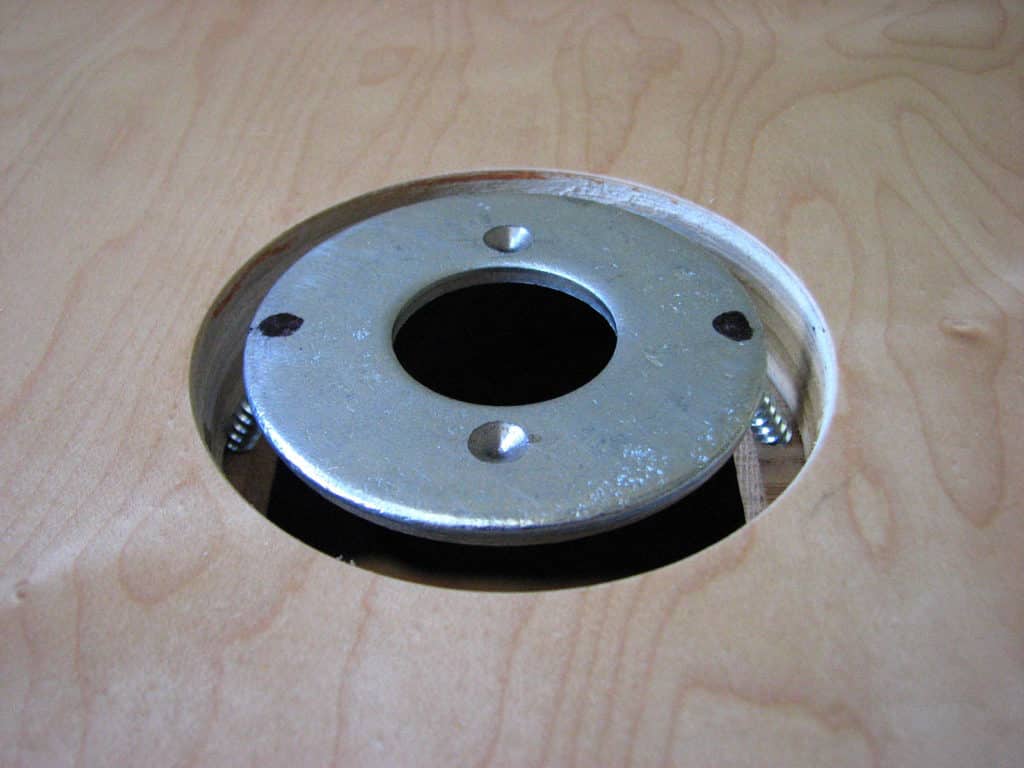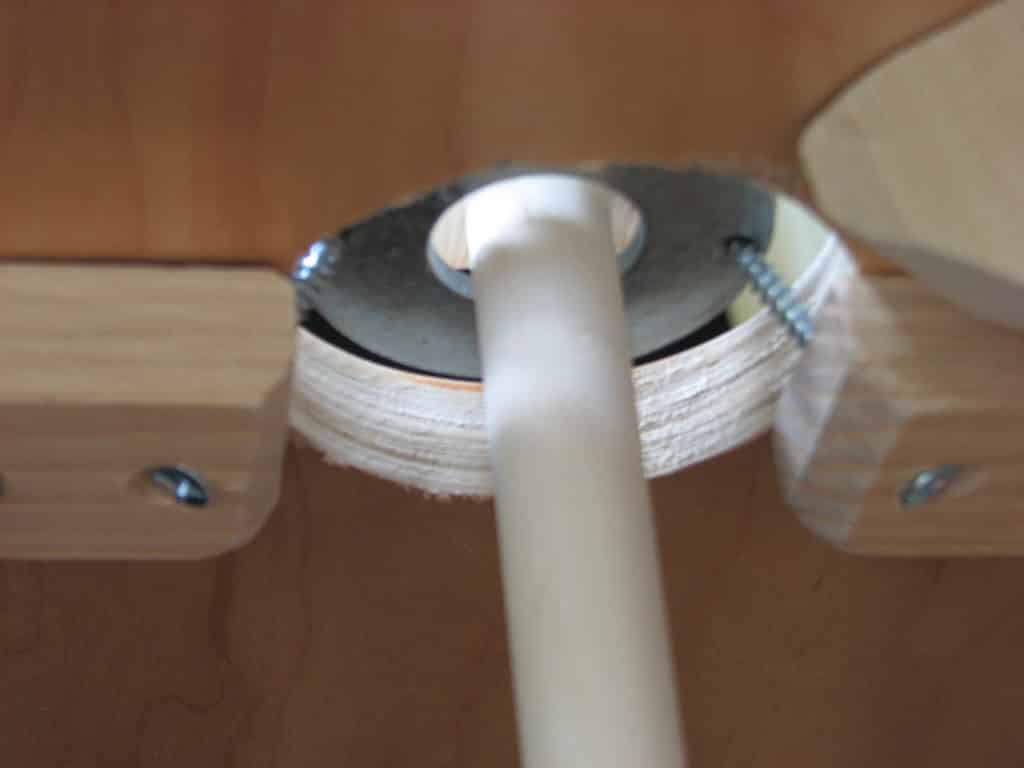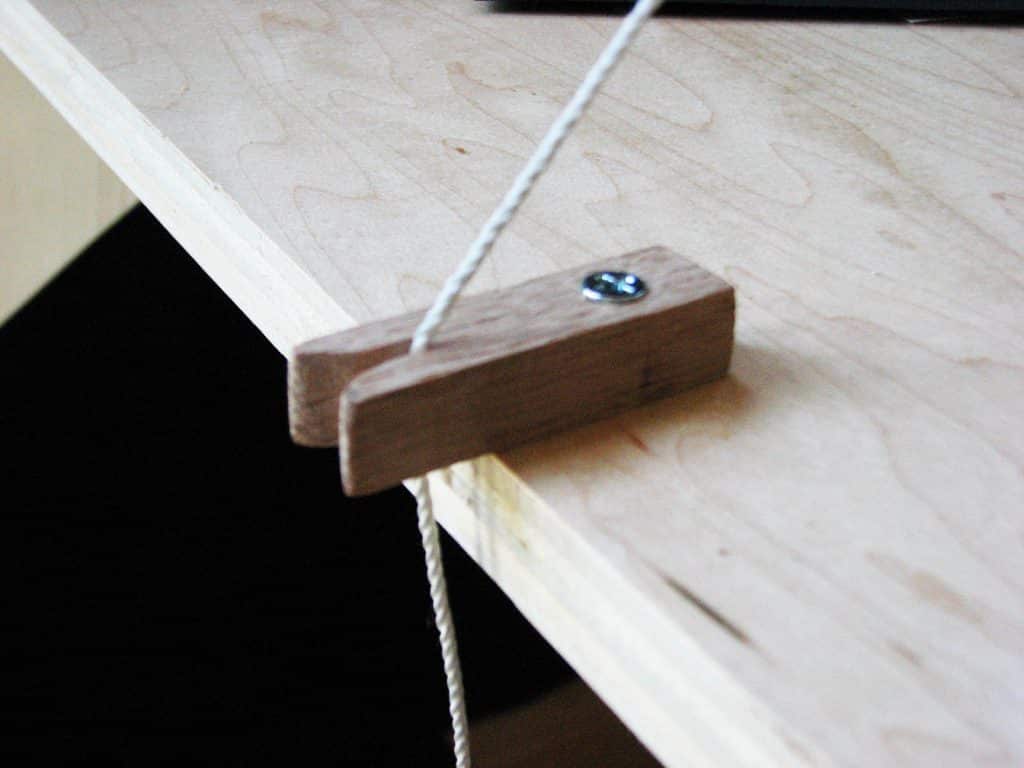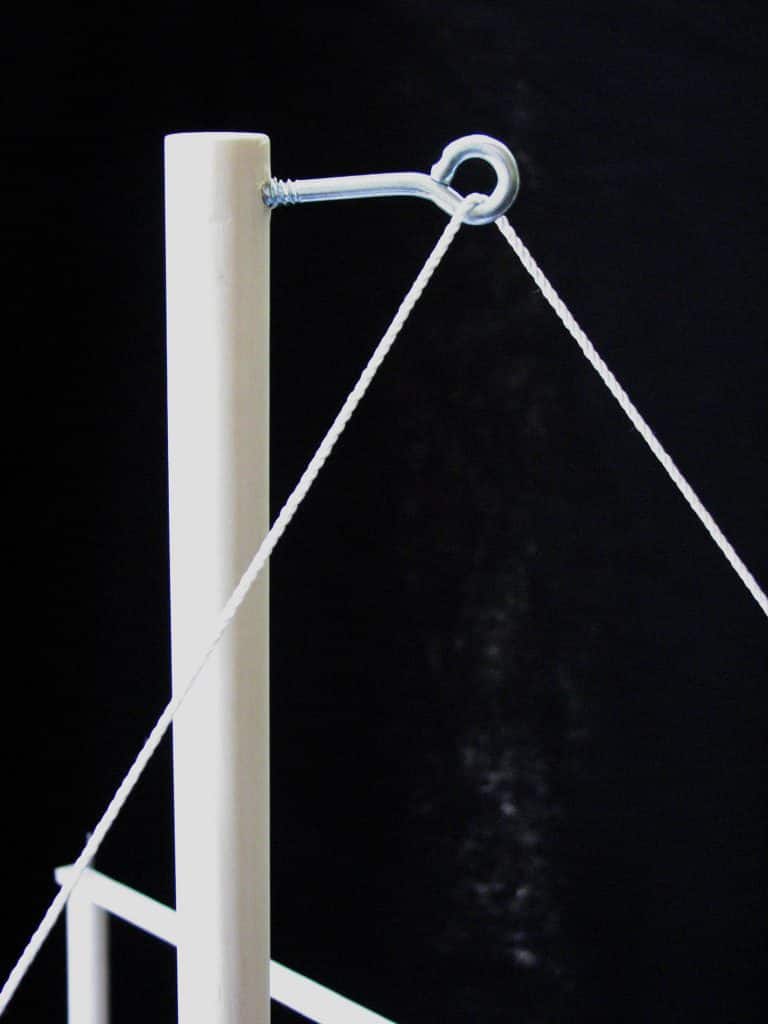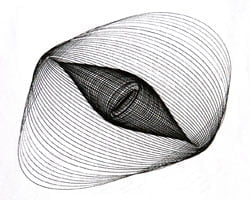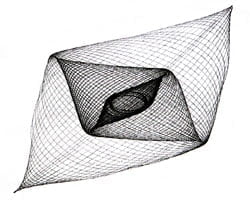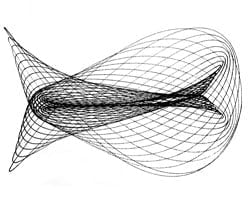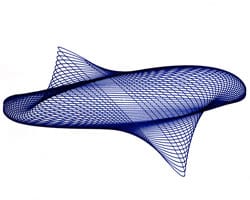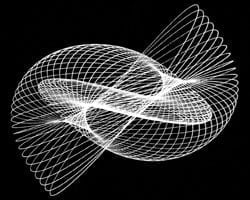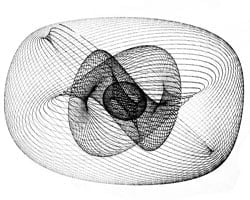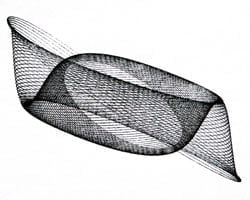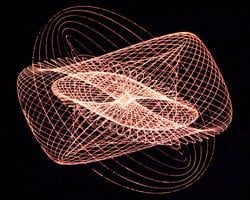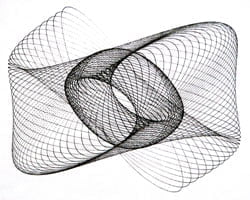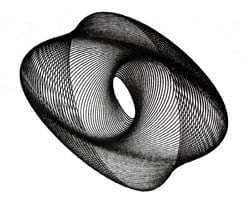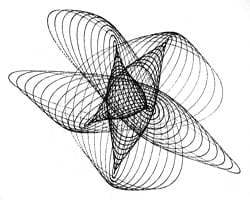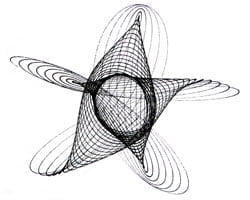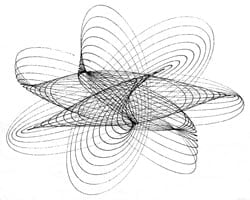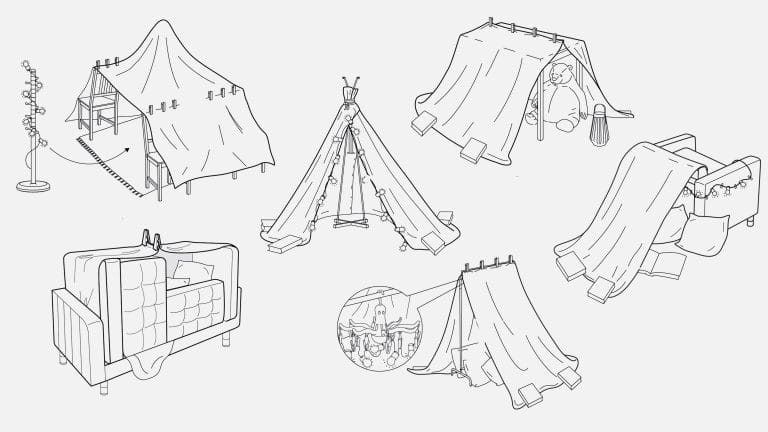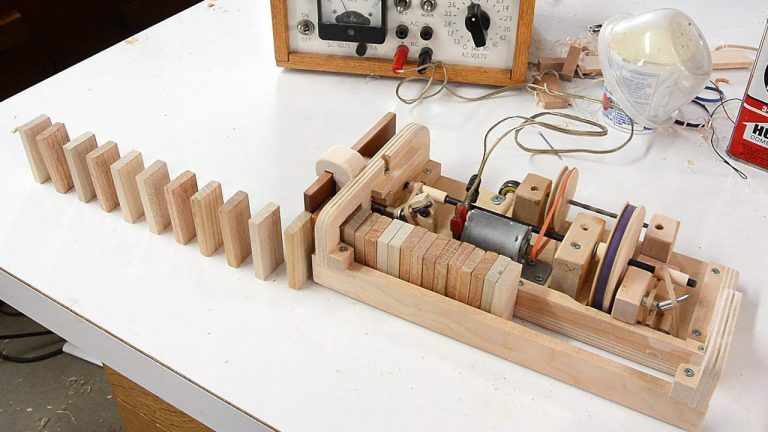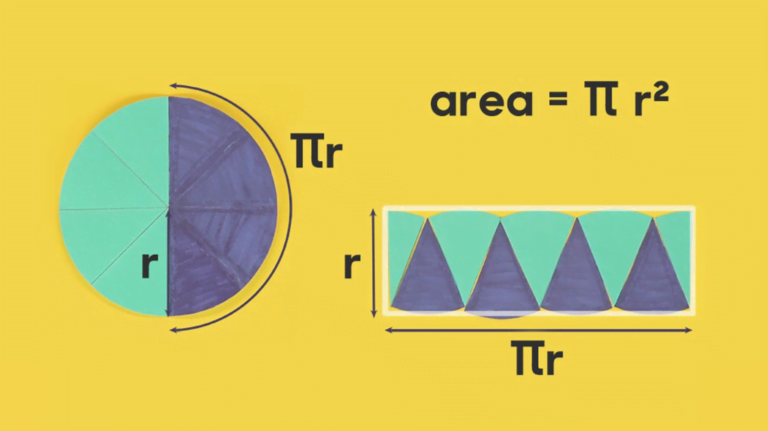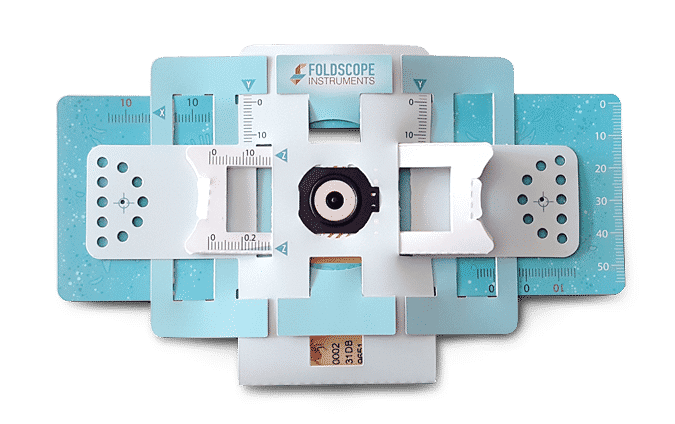This project belongs to a computer graphics artist and researcher, Karl Sims, who is best known for using particle systems and artificial life in computer animation.
A harmonograph is a mechanical device that uses swinging pendulums to draw pictures, believed to be initially invented in 1844 by Scottish mathematician Hugh Blackburn. This 3-pendulum rotary type of harmonograph gives a wide variety of satisfying results. It is reasonably easy to build once you’ve settled on a design and have acquired the appropriate materials and tools. Harmonograph is a great project to do with kids and can result in endless experiments creating new geometric designs.
Ingredients:
- Lumber
- 1 3/4″ x 3’x3′ plywood for table top
- 4 1½” x 1½” x 40″ for legs (about 14′ total)
- 4 1½” x 8″ x 12″ for leg braces (about 4′ total)
- 4 3/4″ x 4′ dowels for pendulums and pen lifter (make sure they are straight)
- 1 3/4″ x 1½” x 30″ oak to cut for pendulum supports, and other
- 1 11″ x 11″ x 1/8″ board for platform to hold paper
- Hardware Store
- 3 3/4″ x 5″ long metal pipe nipples (plumbing section)
- 3 3/4″ to 1″ metal pipe bushings
- 3 1″ steel clamps
- 4 1¼” x 4″ metal plates (or 2 1¼” x 8″ plates cut in half)
- 1 large metal washer with 2½” outer diameter, 1″ inner diameter, for gimbal
- 1 screw-eye for pen lifter
- various drill bits: 3″ circular, 3/4″, 1/8″, etc.
- various #10 screws (1″, 1¼”, 1½”, 1¾”, 2″, 3″)
- a few thin nails
- tools: drill, saw, hammer, tape measure, file, sand paper, etc.
- Sporting goods store:
- 2½ lb weights with 1″ hole, at least 8 of them
- Art supplies store:
- 2 1/2″ x 1/4″ x 30″ balsa (and maybe a spare or two)
- various pens such as: Silver Uni-Ball GEL Impact, and Staedtler Triplus Rollerball
- some string and rubber bands
- paper, 8½” x 11″ (or 9″ x 12″) some black, some white
STEP 1
Table. Start by building a sturdy table. This table-top is a 3’x3′ square of 3/4″ thick plywood. The legs are 1½” x 1½” square and about 37″ long, with triangular braces cut from 1½” x 8″x 12″ wooden pieces. The legs are splayed out slightly to give the table strength and allow the rotary pendulum to swing without hitting a leg.
Tip: screw and/or glue the braces to the legs first, and then cut their tops together at a slight angle with a table or circular saw. Adjust the leg lengths to give a table-top height of about 37″.
Note: if you want to fit the table through doorways without taking off the legs, you might need slightly shorter legs and pendulums.
STEP 2

Step 3
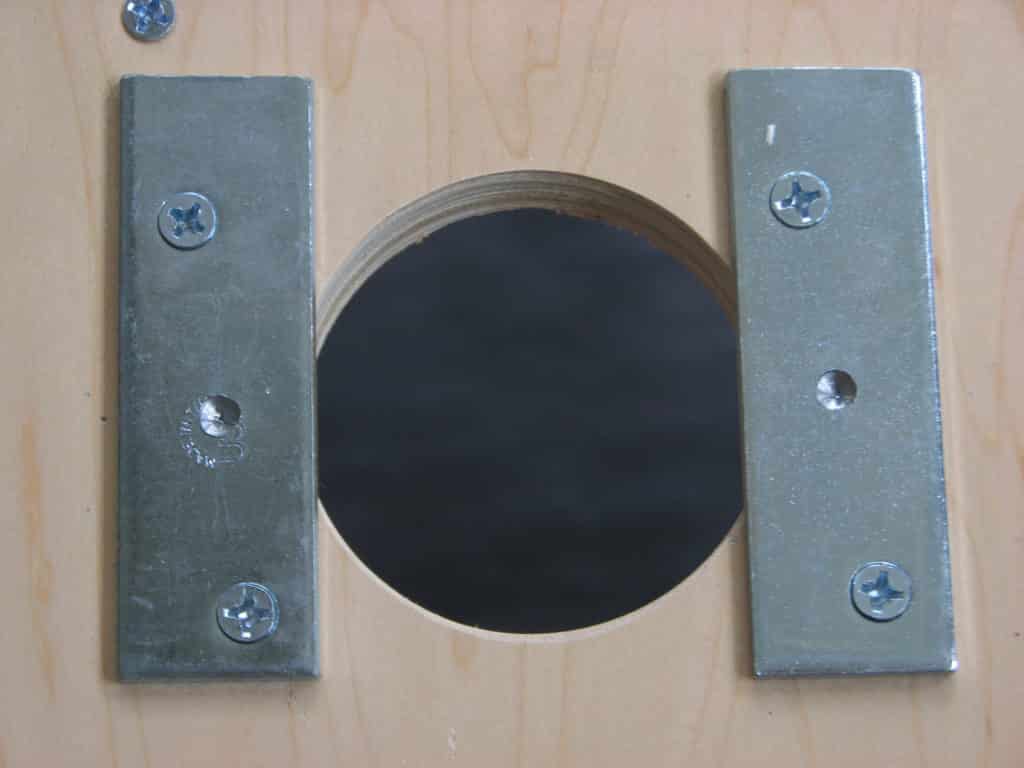
Tip: first, start the indentation in the metal plate with a small drill bit (such as 1/8″) and then continue with a larger bit (such as 1/4″). Be careful not to drill all the way through. Tip: unless you have a good drill press, it may be easier to position the indentations of the plates on the table after you create the fulcrum blocks with protruding screws below, because it can be harder to accurately position the screws in the blocks later to align with the indentations.
Step 4
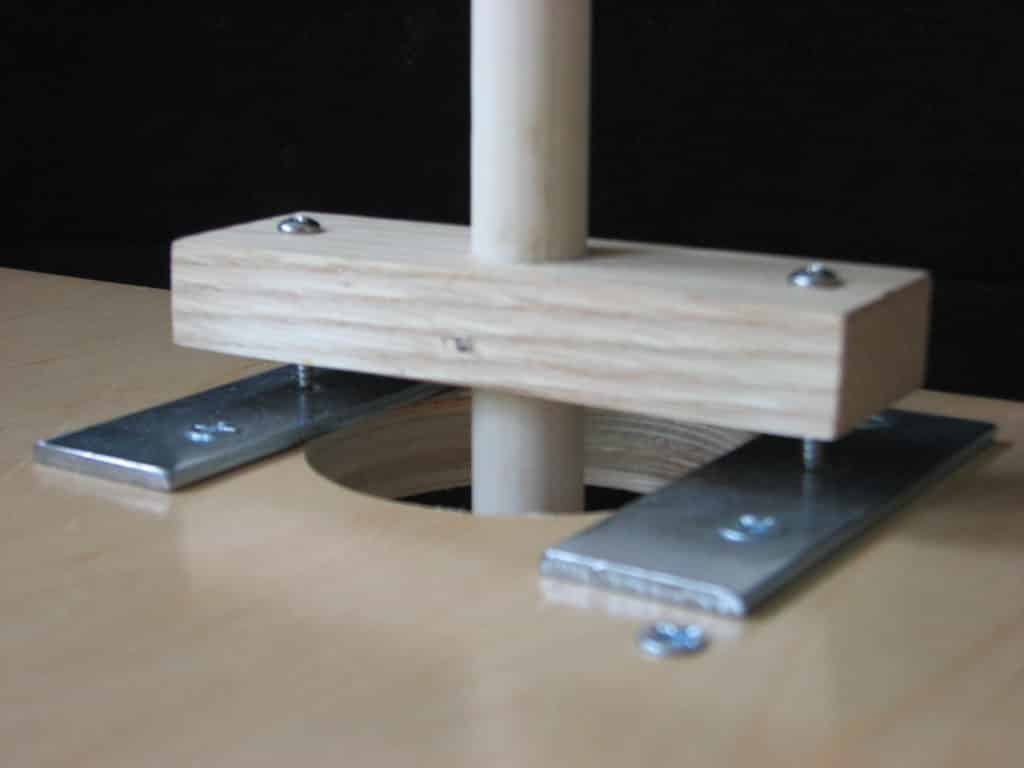
Here are views of the rotary pendulum gimbal from above and below the table. In the picture from below, note the oak blocks (3/4″ x 1½” x 5″) supporting the two screws (1¾” #10) protruding upwards and diagonally. File down the bottom edges of these blocks as needed, so the pendulum doesn’t hit them when it swings. Likewise, file down the corners of the fulcrum block if necessary so it doesn’t hit the table when swinging.
Step 5
Here are views of the rotary pendulum gimbal from above and below the table. In the view from below, note the oak blocks (3/4″ x 1½” x 5″) supporting the two screws (1¾” #10) protruding upwards and diagonally. File down the bottom edges of these blocks as needed so the pendulum doesn’t hit them when it swings. Likewise file down the corners of the fulcrum block if necessary so it doesn’t hit the table when swinging.
Step 6
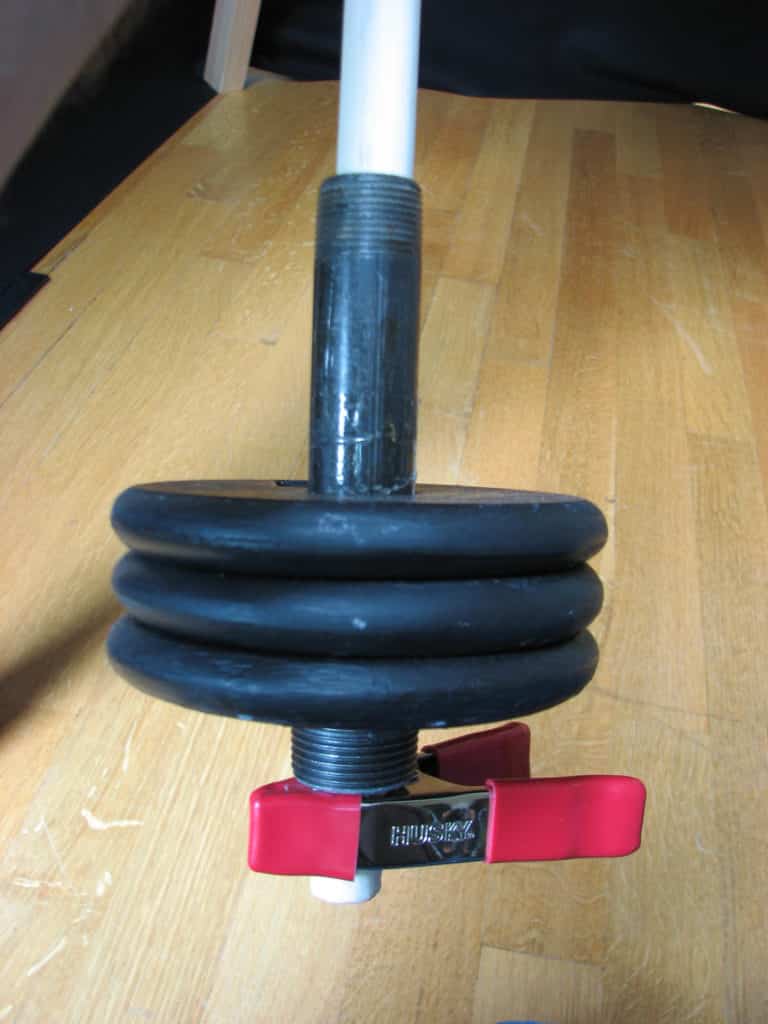
Step 7

*** Use two rubber bands, or some clips, to hold the paper in place on the platform. If the form slips on the platform, spray a thin layer of temporary adhesive on the platform to make it slightly sticky.
Step 8
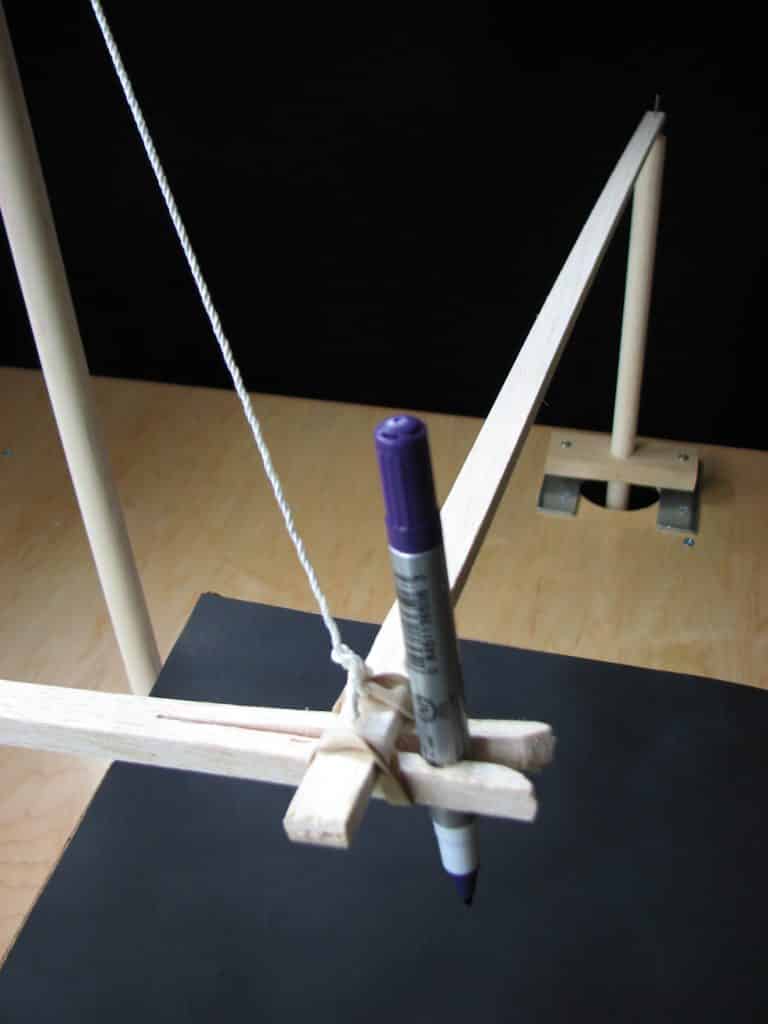
To make a simple pen-holder, drill a 1/2″ hole on the end of one arm, and cut about 4″ down the arm’s center to make a clothes-pin like a device. Alternatively, glue a real clothes-pin to the end of one of the arms. Pictures of both versions are shown.
Finally, attach the two arms with a doubled-over rubber band, as shown.
Note that if you plan to use your harmonograph regularly, such as in a museum setting, a more robust solution for these arms that won’t wear as quickly might be necessary.
Note: An alternate version of the arm-pendulum connection is shown to the right that uses a magnetic ball joint instead of the simple nail method above. Glue one 3/8″ spherical magnet to the arm (making sure the N/S alignment is horizontal by connecting a second magnet). File a hole in the side of a nylon cylinder (1″ height, 1/2″ outer and 3/8″ inner diameter) and use smaller cylinders (3/8″ outer diameter) to hold another magnet inside that can rotate freely. Then glue the cylinder to the top of the pendulum.
Step 9
Step 10
Pens. Experiment with pens and markers of various types and colors. Generally, wide pens or thin markers seem to work best. Here are some I’ve had good luck with so far:
- Uniball GEL Impact in Silver, use on black or dark paper.
- Staedtler Triplus Rollerball Pens (.4mm) in various colors
- Pigma Graphic 1 (1.0mm) in black
- Sakura Identi Pen in black, purple, etc.
but many other types of pens may also work well.
Adjustments
Weight Height. Adjust a pendulum’s weight height to change its swinging frequency. The frequency of a pendulum varies with the inverse of the square root of its length, so to swing twice as fast, the length between the fulcrum and its center-of-mass would need to be 1/4 of the original length (which may not be practical with this harmonograph). For a 3:2 or 4:3 frequency increase, the weights would be raised around 19″ or 15″ respectively, although you should probably do some timing tests to find and mark these heights experimentally.
Weight Amount. Add more weight to a pendulum to counteract friction and make the swinging last longer. I’ve found that 5 lb (2 x 2½) on the rotary pendulum, and 7½ lb (3 x 2½) on the other two works reasonably well. Note that adding more weight does not generally change the frequency of the pendulum.
Phase and Amplitude. Each time you swing the pendulums to make a new drawing, each pendulum’s relative phases, and amplitudes will vary. Try somewhere the rotary pendulum, and the lateral pendulums are initially making circles in the same or opposite directions. Try somewhere the lateral pendulums are initially swinging in phase to make a diagonal line.
Results
Two-pendulum results. To simplify things, you can lock down the rotary pendulum by unclipping that weight, so it rests on the floor and prevents the paper platform from swinging at all. Attach the other weights at their lowest position to start, since a slower pen speed tends to give smoother lines. If the two other pendulums swing in unison simultaneously, you will get simple patterns of circles, ellipses, or lines. If their frequencies are slightly different, the pattern will slowly change from circles to lines and back again as it decays, which will give eye-like designs. When the frequencies are very different, you may get chaotic looking results. However, if you find a position that is near a “harmonic” ratio of frequencies such as 3:2 or 4:3, you can get pleasant Lissajous figures, figure eights, or fish-like shapes.
Three-pendulum near-unison results. The effect of the 3rd rotary pendulum increases the variety of possible results. Some of the best designs occur when the three pendulums all swing at similar but slightly different frequencies, with the rotary pendulum swinging around in a circular motion. Note that the mass of the paper platform on top of the rotary pendulum causes it to swing at a slightly slower frequency when all weights are at their lowest position, so you would raise that one slightly if you want it to match the frequency of the other two.
Three-pendulum harmonic results. Various star-shaped designs can be made by raising weights on both the lateral pendulums, or just the rotary pendulum, to give harmonic frequency ratios. A 3:2 ratio often results in 5-pointed stars and a 4:3 ratio tends to give 7-pointed star shapes.
*** Achieving higher frequency ratios, such as 2:1, 3:1, 4:1 etc. can be difficult with this type of harmonograph, because a quickly swinging pendulum with its weights way up tends to slow down too soon. It may be preferable to add some weights on top of one or more pendulums above the fulcrum which will decrease the frequency, rather than raising weights to increase frequency.
The harmonograph in action:


